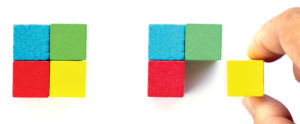
What Are Addition and Subtraction?
Addition is used to figure out the total of two or more numbers. Subtraction is used to find the difference between two numbers.
Why Is Learning About Addition and Subtraction Important?
Addition and subtraction are useful for many activities of everyday life, like setting the table, making change at the supermarket, and playing some games. Addition and subtraction prepare children for learning about other math topics, including multiplication and division, in school.
What Do Children Need to Know About Addition and Subtraction?
- Adding means putting groups together.
- You can use counting to see how many there are all together.
- You can add in any order.
- Subtracting means taking objects away from a group.
- After some have been taken away, you can count what’s left over to get the answer.
- Preschoolers can understand addition and subtraction without learning addition or subtraction facts, and without learning the plus (+) or minus (–) signs.